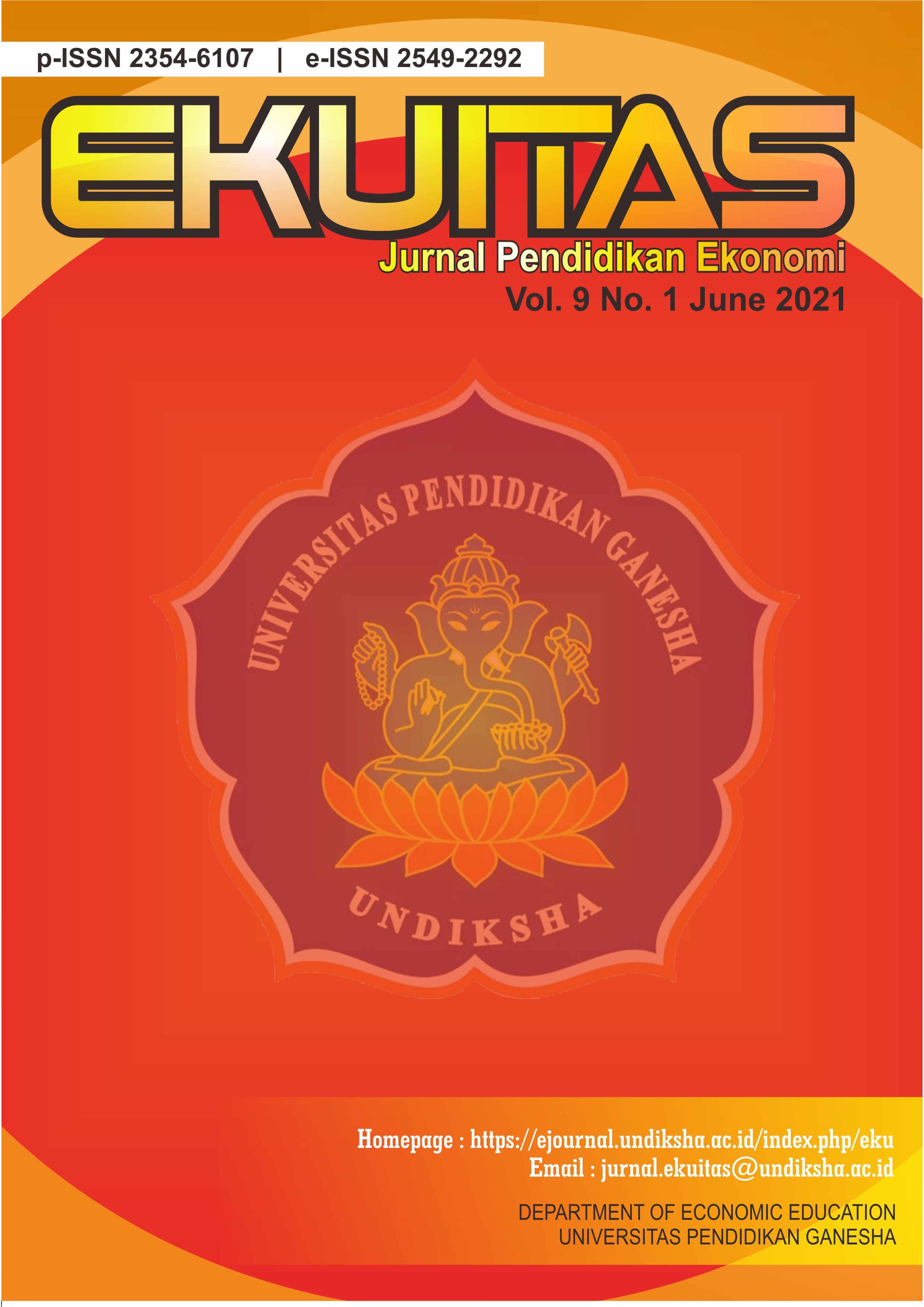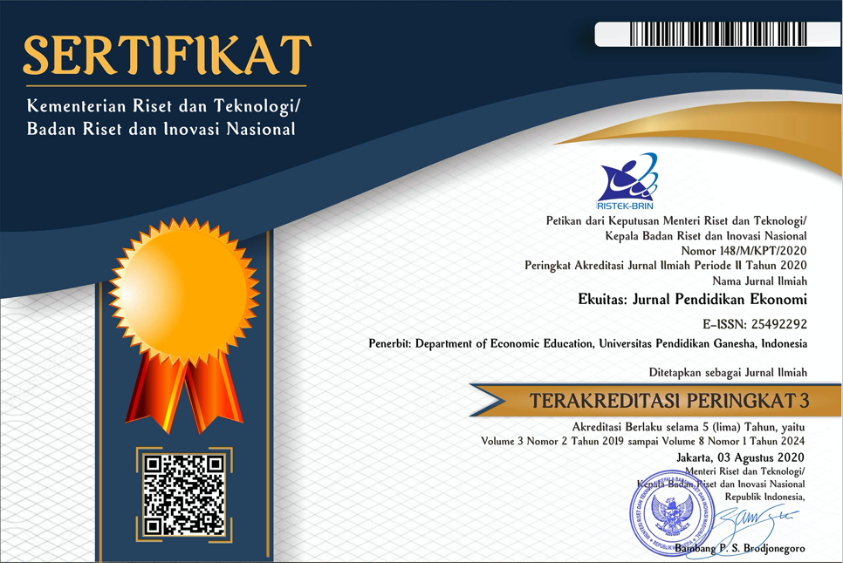Analisis SWOT Daerah Tujuan Wisata Ranu Bedali
DOI:
https://doi.org/10.23887/ekuitas.v9i1.28036Keywords:
growth strategies, SWOT analysis, tourist destination.Abstract
This study aims to determine the strengths, weaknesses, opportunities, and threats of the tourist attraction of Ranu Bedali as a tourist destination, and to find out the right strategy to be applied in the tourist destination of Ranu Bedali, Ranuyoso District, Lumajang Regency. In this regard, the study was designed as a qualitative descriptive study with a sample of 100 people consisting of government, managers, visitors and the community. Data were collected using a questionnaire and interviews were further analyzed descriptively qualitatively. The results showed that the strength of 2.42 weakness 0.54 opportunity 2.26 threat 0.47 and the cut point (1.88; 1.79) is in quadrant I, namely growth with concentration of aggressive strategies where the situation can be done by utilizing strengths and opportunities to increase the growth of Ranu Bedali destination destinations. Optimizing the potential of beautiful scenery, cool and beautiful, cheap ticket prices, the existence of swimming pools and waterfalls, and cleanliness that is still well maintained must always be preserved and socialized to the public so that people also preserve nature, not cut down trees carelessly, do damage to facilities and infrastructure in tourism and so as not to lose competitiveness with other tourist attractions. Increase arts and cultural performances, develop promotion systems, organize craft and souvenir training, improve damaged roads, access to tourism so that they are ready to face competition between tourist destinations. Improving the quality of Human Resources (HR) tourism managers and communities around tourism so that illegal logging does not occur again, destruction of facilities and infrastructure, and does not become perpetrators of pembegalan against people from outside Lumajang who want to visit the tourist destination Ranu Bedali.
References
Achsa, A., Destiningsih, R., & Hirawati, H. (2020). Strategi Pemasaran Untuk Meningkatkan Daya Saing Wisata Desa Taman Bunga Manohara Desa Purwodadi. Jurnal Manajemen Dan Kewirausahaan, 5(1), 1–17.
Andajani, E., Widjaja, F. N., & Prihatiningrum, A. E. (2017). Pengembangan Potensi Desa Wisata Melalui Analisa SWOT di Kecamatan Kalitidu Bojonegoro. Siminar Nasional Dan Gelar Produk, 909–915.
Delita, F., Elfayetti, & Sidauruk, T. (2017). Analisis SWOT Untuk Strategi pengembangan Objek Wisata Pemandian Mual Mata Kecamatan Pematang Bandar Kabupaten Simalungun. Jurnal Geografi, 9(1).
Farukhi, M. (2018). Mengenal 34 Provinsi Indonesia. Sinergi Prima Magna.
Ghony, M. D., & Almanshur, F. (2012). Metodologi penelitian kualitatif. Jogjakarta: Ar-Ruzz Media.
Lumajang, D. P. dan K. K. (2019). Laporan Kinerja Triwulan III. Disparbud.
Pitana, I. G., & Gayatri, P. G. (2005). Sosiologi pariwisata. Yogyakarta. Andi Publishing. Richard, S.(2000). Quality service. Jakarta: Graha Ilmu.
Pranomo, Z. (2019). Desa Wisata Populer. Rubrik.
Purwanti, P., Susilo, E., & Indrayani, E. (2017). Pengelolaan hutan mangrove berkelanjutan: pendekatan kelembagaan dan insentif ekonomi. Universitas Brawijaya Press.
Sari, D. P., & Oktafianto, A. (2017). Penentuan Strategi Bisnis Menggunakan Analisis SWOT dan Matriks IFAS - EFAS pada CV. Dinasty. Seminar Nasional IENACO, 238–245.
Sripambudi, G. I., Hilman, Y. A., & Triono, B. (2020). Strategi Dinas Pariwisata dalam Pengembangan Infrastruktur Objek Wisata Telaga Ngebel di Kabupaten Ponorogo. Jurnal Ilmu Sosial Dan Humaniora, 3(1), 38–50.
Sugiyono, P. D. (2017). Metode Pemelitian Kualitatif. In Penerbit CV. Alfabeta: Bandung.








